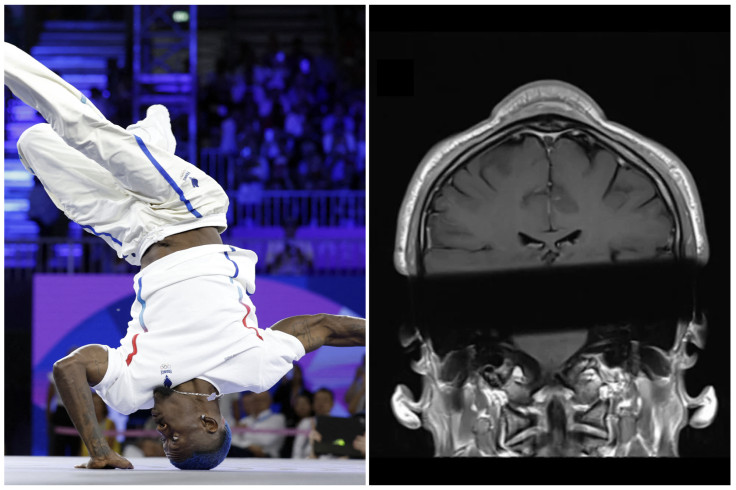
A case study out of Denmark highlights a breakdancer who, after years of performing headspins, developed an inch-thick tumor on his scalp known as "headspin hole."
Breakdancing, which debuted as a competitive sport at the 2024 Paris Olympics, is known for its high-energy moves and daring physical feats. One such move, the headspin, has long been a symbol of technical mastery in the breaking world. However, this move can lead to a rare condition known as "headspin hole," and is the subject of a case study released in BMJ Thursday.
"We believe the condition results from repeated friction between the head and the floor, combined with the weight-bearing nature of headspins, accumulated over years of breakdancing," said one co-author of the case study, Dr. Christian Baastrup Søndergaard, who went on to warn that the repetitive strain "likely triggers inflammation, and over time, minor bleeding may lead to thickened skin and scar tissue."
The case study reported on by EBBOW centers on a man in his thirties, who spent nearly two decades practicing breakdancing up to five times a week and developed a benign tumor on his scalp as a result of practicing headspins. After experiencing hair loss, the growth of a painful lump, and increasing aesthetic concerns, the breakdancer underwent surgery to remove the cone-shaped mass.

"The outcome is much better than it looked before, and I am glad I had it done," the patient says in the report. "It is now possible for me to go out in public without a cap/hat, which is of course a very nice feeling."
Seasoned breakdancers are familiar with the risk of broken bones and nerve damage inherent in repeating breaking's high-impact moves. Many dancers rely on knee braces or wrist guards, with some adding padded beanies or even helmets to their arsenal of protective gear as awareness of "Headspin hole" spreads within the breakdancing community.
© 2025 Latin Times. All rights reserved. Do not reproduce without permission.





